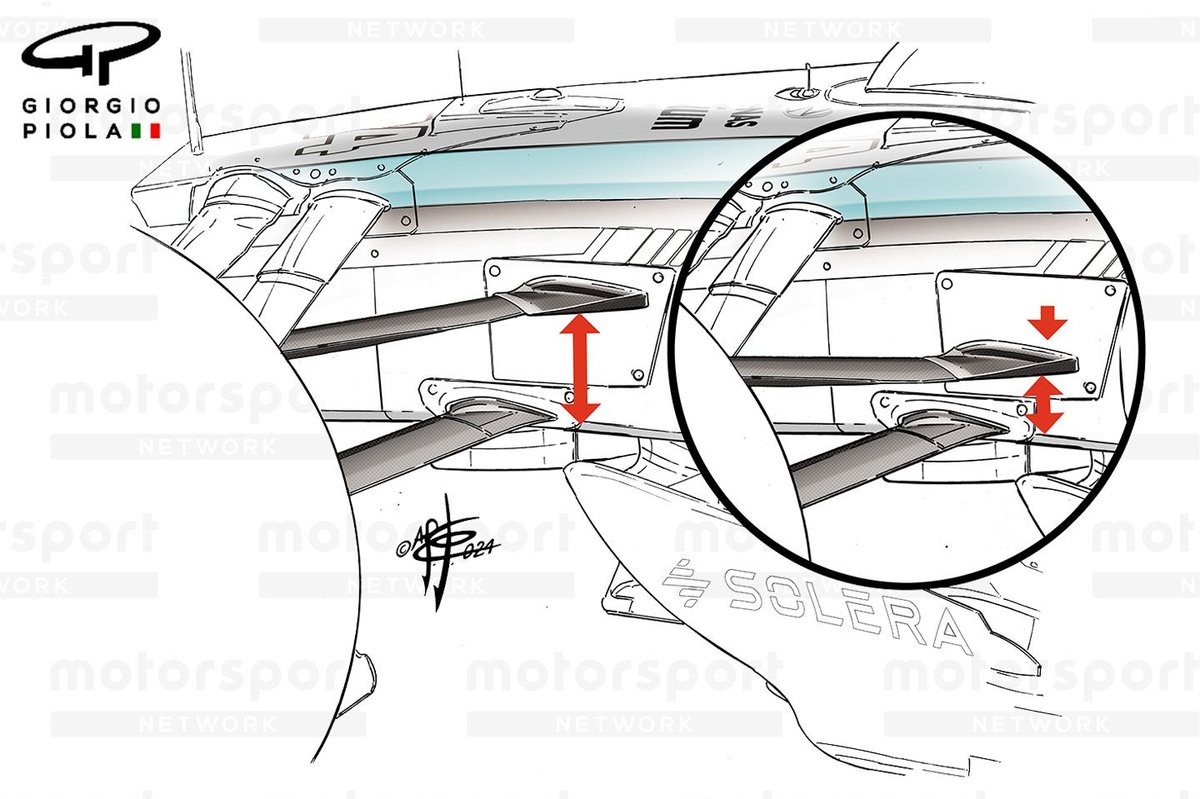This design allows the team to move the inboard end of the suspension leg to better suit the requirements it needs for the optimum set-up around each track.
Most teams do have some level of freedom in this area, but we are usually talking about millimetres rather than the many centimetres of freedom that the solution on the W15 affords Mercedes.
That’s clever. I like these kinds of innovations. They also did well with DAS. It’s a shame these things tend to get banned.
Tbh, I hate a lot of the direction that F1 has went in.
Banning FRIC, banning the use of exotic, lightweight materials in engines, extremely restrictive engine regulations, strange changes to rules surrounding braking systems, bans on various suspension systems (particularly ones that Mercedes used), etc.
DAS is particularly annoying. It was a clever bit of tech and was operated entirely manually, by the driver, using wheel adjustments.
It’s not like it was some driver aid where a computer did everything for the driver, like ABS or launch control would be.
This is perhaps controversial, but I think the budget cap is bad too. All it’s done is lock in advantages and heavily punished teams who make bold or incorrect design decisions.
F1 is always badged as the pinnacle of motorsport, but all these over-the-top restrictions are putting that in jeopardy.
Agreed on both fronts. I liked DAS and imagine a world where it wasn’t banned and restarting from a safety car was closer to racing immediately. I guess that isn’t necessarily a good thing or a bad thing, but it seems everyone would impliment between seasons.
Hopefully they have less setup pains, last year was insanely hot and cold on setup



